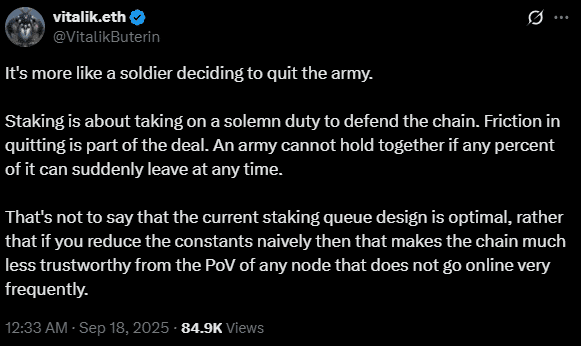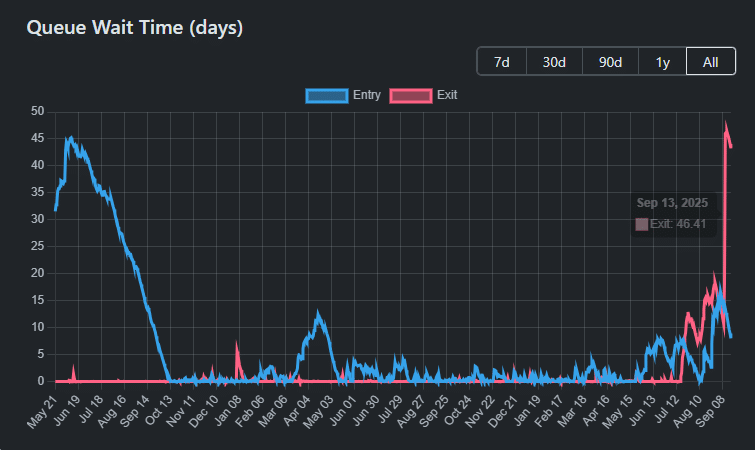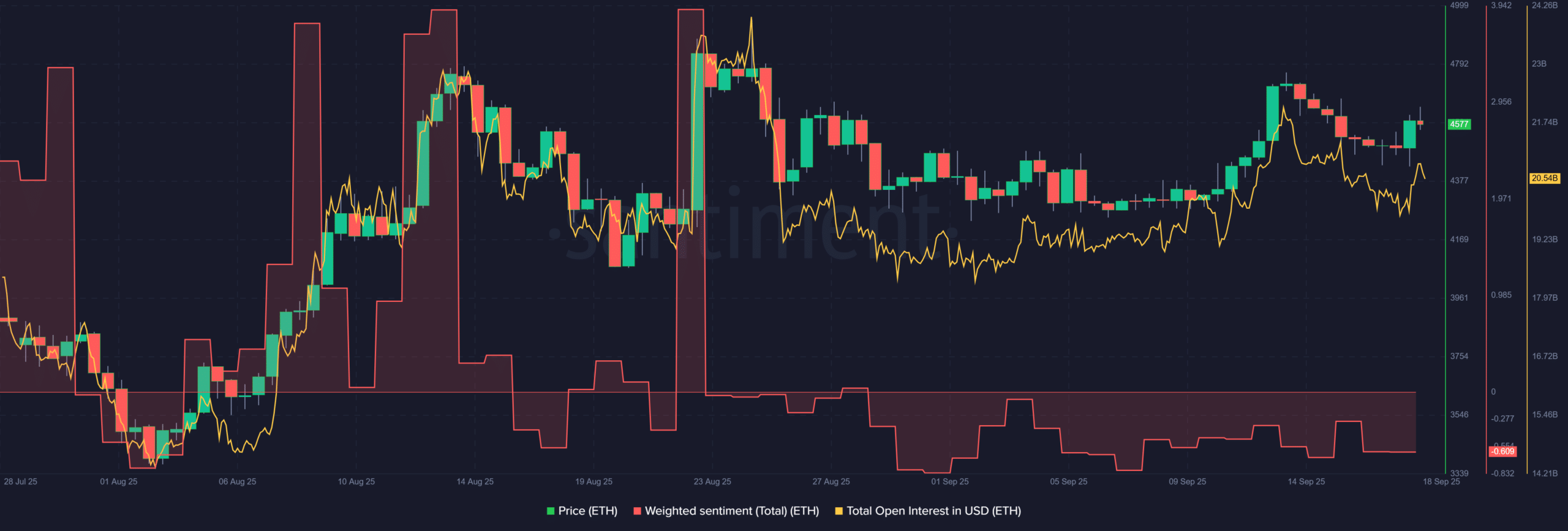The ETH unstaking queue is a dynamic validator withdrawal backlog that recently surged past 2.5 million ETH, extending the Ethereum unstaking period to ~43–46 days. This queue-based delay is a built-in security mechanism designed to limit rapid validator exit and protect chain finality.
-
Waiting time: ~43–46 days for unstaking (dynamic, based on queue size)
-
Pending unstaked value: ~2.5 million ETH (~$11B at current prices)
-
Security rationale: Exit delays reduce risks to consensus and network finality
ETH unstaking queue surged to 2.5M ETH, extending the unstaking period to ~46 days — learn what this means for stakers and how to prepare. Read now.
What is the ETH unstaking queue and why has wait time increased?
The ETH unstaking queue is the validator withdrawal backlog that controls how fast validators can exit the beacon chain. The queue size rose from ~600K ETH to ~2.5M ETH, expanding the dynamic waiting period from ~10 days to roughly 43–46 days to preserve consensus safety and finality.
How many ETH are pending withdrawal and what does that mean for holders?
Validator queue data shows ~2.5 million ETH queued for exit, equivalent to over $11 billion at current market rates. A larger queue length increases the dynamic delay because the protocol limits the number of validators that may exit per epoch to avoid ramping stress on consensus.

Community complaints included immediate liquidity needs — for example, paying bills — and comparisons to faster unstaking on other chains. These use cases underscore the real-world friction caused by longer exit windows.
Why does Vitalik Buterin call the waiting period a “security” feature?
Vitalik Buterin framed the extended wait as part of a deliberate security trade-off: exit friction prevents coordinated, rapid withdrawals that could threaten finality or the chain’s trustworthiness. He urged staking providers to clearly disclose this risk to clients in advance.
How did the queue grow so quickly and what triggered the jump?
The queue expanded from ~600K to ~2.5M ETH in a short period due to a spike in exit requests from validators. Factors include portfolio rebalancing, macroeconomic reactions to policy changes, and short-term liquidity needs among retail and institutional stakers.

Protocol rules cap the number of exits allowed per epoch. When requests exceed that cap, excess validators are placed in a queue and wait longer. The queue’s size therefore directly lengthens the unstaking period.
How much value is affected and how is it calculated?
Pending unstaked value is the product of queued ETH and current ETH price. With ~2.5M ETH queued and ETH trading around current market levels, the amount exceeds $11 billion. This metric is an on-chain indicator of potential near-term sell pressure.

Market response has been muted; speculative interest did not sharply rebound even after external macro moves (for example, a central bank rate cut). Traders appear to be digesting both macro and protocol-level developments.
How should stakers and service providers respond?
Service providers should proactively disclose potential delays to clients. Stakers should plan liquidity needs before requesting exits and consider partial exits or liquid staking derivatives where appropriate. Short-term cash needs should not rely solely on immediate unstaking.
Practical steps to prepare for long unstaking queues
- Maintain a cash buffer to cover 1–3 months of expenses.
- Use diversified liquidity options (exchanges, loans, or liquid staking tokens) rather than relying on fast on-chain exits.
- Confirm exit policies and queue expectations with your staking provider in writing.
Frequently Asked Questions
What causes the dynamic waiting period to change?
The dynamic waiting period is tied to the number of exit requests vs. the protocol’s per-epoch exit cap. When requests exceed the cap, the queue grows and wait time increases. This is a deterministic on-chain mechanism.
Can the unstaking period be shortened?
Shortening the wait would require protocol changes and community consensus. Developers and researchers emphasize the security trade-offs; reducing the delay could increase finality risk and reduce trust in the chain.
Key Takeaways
- Queue surge: The validator exit queue jumped to ~2.5M ETH, expanding waits to ~43–46 days.
- Security trade-off: Extended delays are a deliberate design to protect consensus finality.
- Staker action: Plan liquidity, verify provider disclosures, and consider alternative short-term liquidity solutions.
Conclusion
Ethereum’s extended unstaking period reflects a protocol-level security trade-off after the validator exit queue surged to ~2.5M ETH. Stakers and providers should treat the delay as a predictable risk, disclose it clearly, and plan liquidity accordingly. COINOTAG will continue monitoring on-chain metrics and protocol governance updates.
